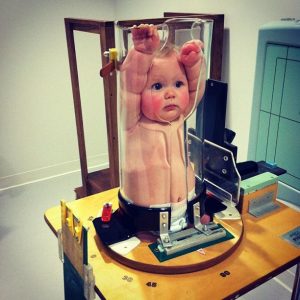Imaging Pediatric Patients: What Are Best Practices?

Radiologic technologists should be aware that children are not merely small adults and that imaging pediatric patients requires certain special techniques. In fact, children have been the subject of many landmark events in medical ethics. Children undergoing radiographic imaging require special consideration not only because of their small size but also because they are more sensitive than adults to the adverse effects of ionizing radiation. In addition, children have a longer remaining lifespan during which the effects of radiation exposure can manifest. Therefore, adherence to the ALARA philosophy is critical during pediatric digital imaging.
Use of Anti-Scatter Grids
The attenuation of the X-ray beam is affected by tissue composition and tissue thickness and this is important while imaging pediatric patients. Children have different dimensions than adults and variable thickness depending on age. Not only do the body parts of children grow during childhood, they grow at different rates and the growth varies from child to child. For instance, the femur grows to five times its infant size by the time the person is an adult. This makes it difficult to develop exposure technique charts for pediatric patients. Anti-scatter grids are not typically recommended for body parts less than 10 cm in thickness. Therefore, the use of grids in pediatric patients should be carefully considered based on the patient’s size as well as the composition of the tissue being imaged.
AEC Settings
Children vary in size from tiny premature babies to obese teenagers. This makes it especially important for pediatric radiographers to adjust technique and select the optimum exposure factors while imaging pediatric patients. For example, the less calcified bones of young children may require a lower kVp to penetrate the tissue compared to adults. The AEC settings used for adults cannot be used to image children and radiographers may need to manually select exposure parameters.
Collimation and Shielding
As with adults, proper collimation and shielding are critical in pediatric patients to ensure all essential anatomy is included in the exposure field and no tissue is unnecessarily irradiated. Radiologic technologists should rely on department guidelines and protocols with regards to collimation and shielding in children.
Patient Positioning and Immobilization
Positioning and immobilization are particularly important while imaging pediatric patients because of possible poor compliance. Radiographers should use immobilization aids to prevent movement artifact. However, immobilization and positioning devices should be used carefully as their inclusion in the exposure field can create artifacts on the digital image receptor. It is best practice, when imaging a pediatric patient, to use exposure techniques that are appropriate for the size of the patient and to properly position and immobilize the patient to avoid repeat exposures.
X-ray CE
We have a range of e-courses that allow X-ray technologists to complete their continuing education requirements in a convenient way. Whether you’re looking for 1 CE credit or 24 CE credits, we have a course to meet your needs. Unsure of how this all works? Visit our FAQ page or contact us with questions.
Here is more information about xray ceu credits
